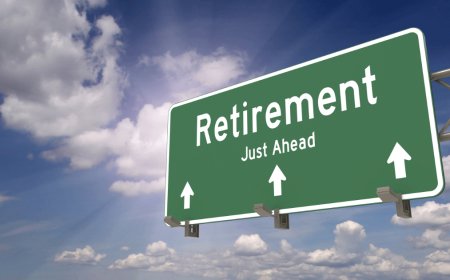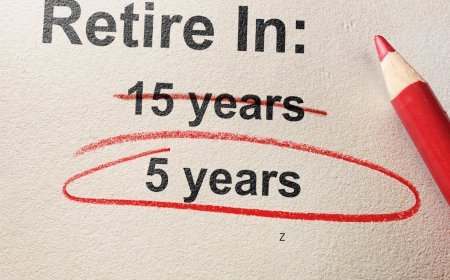How to Retire Early Without Being Rich (The FIRE Movement Explained)
Learn the principles of Financial Independence Retire Early (FIRE) and how ordinary people are retiring decades before traditional retirement age.

The FIRE movement (Financial Independence, Retire Early) is helping ordinary people retire in their 30s, 40s, and 50s without inheriting money or earning massive salaries. Here's how it works and how you can apply these principles.
What FIRE Really Means
FIRE isn't about being rich in the traditional sense – it's about being financially independent. The goal is to accumulate enough invested assets that the returns can cover your living expenses indefinitely, allowing you to retire from traditional employment.
The basic math: if you can live on 4% of your invested assets annually, you can theoretically retire. This means if you have $1 million invested and can live on $40,000 per year, you're financially independent.
The Three Types of FIRE
Lean FIRE: Retiring with minimal expenses, typically requiring $500,000-$750,000 in assets. This involves living very frugally but achieving independence quickly.
Regular FIRE: Retiring with moderate expenses, typically requiring $1-2 million in assets. This allows for a comfortable but not luxurious lifestyle.
Fat FIRE: Retiring with higher expenses, requiring $2.5+ million in assets. This maintains a more affluent lifestyle in retirement.
Most people start with Lean FIRE goals and adjust based on their preferences and progress.
The FIRE Formula
FIRE success depends on two key factors: dramatically increasing your savings rate (often 50%+ of income), and investing those savings in growth assets like stock index funds.
The higher your savings rate, the faster you can achieve FIRE. Someone saving 50% of their income can potentially retire in 15-17 years, while someone saving 20% might need 30-40 years.
Increasing Your Savings Rate
FIRE followers use aggressive strategies to maximize savings: living in smaller homes or with roommates, driving used cars or using public transportation, cooking at home and minimizing restaurant meals, and choosing lower-cost entertainment and travel options.
The key is distinguishing between needs and wants, and being willing to sacrifice short-term consumption for long-term freedom.
The Income Side of the Equation
While cutting expenses is important, increasing income accelerates FIRE significantly. Common strategies include: developing high-value skills for career advancement, starting side businesses or freelancing, investing in education or certifications that boost earning potential, and negotiating salaries and seeking better opportunities.
Many FIRE followers focus heavily on career optimization in their 20s and 30s to maximize earning potential.
Investment Strategy for FIRE
Most FIRE followers use simple, low-cost investment strategies: broad market index funds for diversification and low fees, high stock allocation (70-90%) during accumulation phase, and automatic investing to remove emotion from decisions.
The goal is steady, long-term growth rather than trying to beat the market with complex strategies.
Geographic Arbitrage
Many FIRE followers use geographic arbitrage – earning money in high-income areas while living in lower-cost areas, or retiring in countries with lower costs of living where their dollars stretch further.
This can dramatically reduce the amount needed for financial independence.
What 'Retirement' Actually Looks Like
FIRE retirement doesn't mean doing nothing forever. Most FIRE retirees: pursue passion projects or hobbies, do part-time or seasonal work they enjoy, volunteer for causes they care about, and travel or spend more time with family.
The key is having the choice to work or not work, rather than being forced to work for survival.
Common FIRE Criticisms and Responses
Critics argue that FIRE requires high incomes, extreme frugality, or unrealistic market assumptions. FIRE followers respond that: the principles work at various income levels, the 'sacrifice' period is temporary for lifetime freedom, and historical market data supports the 4% withdrawal rule.
The key is adapting FIRE principles to your specific situation rather than following them blindly.
Getting Started with FIRE Principles
You don't need to commit to full FIRE to benefit from these principles: calculate your current savings rate and try to increase it gradually, track your expenses to identify areas for optimization, invest consistently in low-cost index funds, and focus on increasing your income over time.
Even if you don't retire at 35, applying FIRE principles can help you achieve financial independence much earlier than traditional retirement age.
The FIRE movement proves that retirement age is more about choices than circumstances. By being intentional about spending, aggressive about saving, and consistent about investing, ordinary people can achieve extraordinary financial freedom.
What's Your Reaction?
 Like
0
Like
0
 Dislike
0
Dislike
0
 Love
0
Love
0
 Funny
0
Funny
0
 Angry
0
Angry
0
 Sad
0
Sad
0
 Wow
0
Wow
0







































